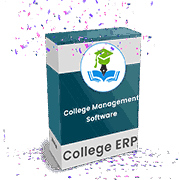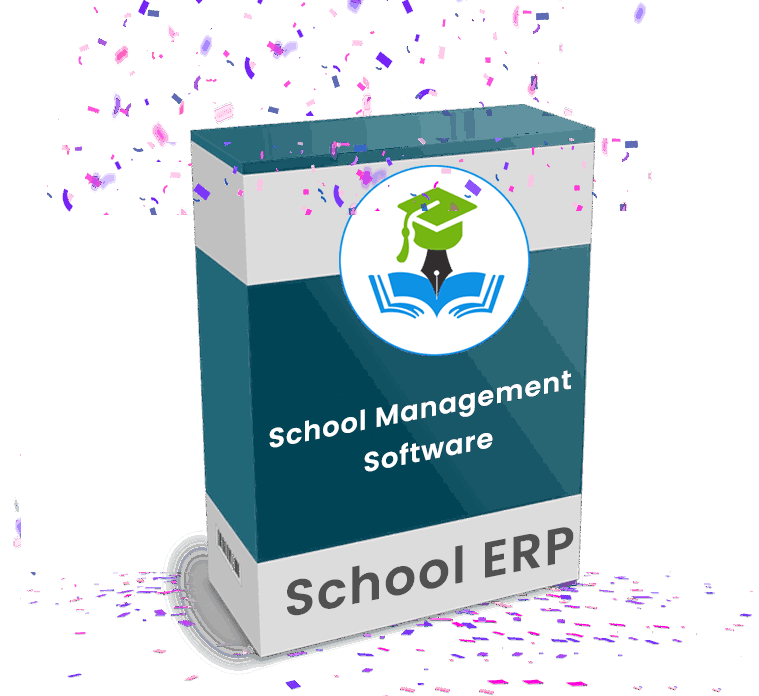What Is Admissions Software?
Specialized software called admissions software was created to automate and expedite the admissions process in educational establishments including colleges, universities, and schools. From receiving applications to enrolling students, it is a potent tool that aids admissions staff in managing the full student admissions cycle. The creation and administration of online application forms is one of the primary roles of admissions software.
Applicants can complete their information and necessary documents online rather than on paper, which makes the procedure more effective and convenient for both the applicants and the school. Additionally, this lessens the possibility of misplacing crucial documents and uses less paper, which benefits the environment. The capacity to monitor and arrange application data is another essential component of admissions software.
It allows admissions staff to easily view and manage all applicant information, including contact details, academic records, test scores, and more. This helps them to assess each candidate's eligibility and make informed decisions. Moreover, admissions software offers personalized communication with applicants. It enables institutions to send automated emails and notifications to applicants, keeping them updated throughout the admissions process.
This enhances the application process and the institution's reputation. Additionally, analytics and reporting features offered by admissions software offer insightful information about the admissions procedure. It assists admissions staff in monitoring application progress, seeing trends, and making data-driven choices to enhance the admissions process.
Furthermore, in order to facilitate a smooth data flow and boost productivity, admissions software connects with other programs, including Customer Relationship Management (CRM) and Student Information Systems (SIS). All things considered, educational institutions seeking to update their admissions procedure and improve the overall experience for both applicants and admissions personnel will find that admissions software is a useful tool. It is a wise investment that can increase productivity, save time, and draw in top-tier students to the school.
What Are the Recent Trends in Admissions Software?
The field of admissions has been significantly impacted by technology in recent years, as more and more educational institutions use admissions software to increase efficiency and streamline their procedures. Buyers should keep abreast of the most recent developments in admissions software since the need for these software solutions is only going to increase.
When it comes to choosing the best software for your institution, our buyer's guide will give you insightful information on the latest advancements and trends in the admissions software industry.
1. Cloud-based Solutions: The move to cloud-based solutions is one of the biggest developments in admissions software. Admissions staff may easily access and manage data with these solutions at any time and from any location. As the organization expands, this not only facilitates better teamwork and communication but also more flexibility and scalability.
2. Data Analysis and Reporting: Institutions may now monitor and examine their admissions data in real-time thanks to the robust data analysis and reporting features that admissions software now offers. This facilitates trend identification, comprehension of enrollment trends, and data-driven decision-making to enhance the admissions procedure.
3. Automated Communication: As automated communication techniques have grown in popularity, admissions software now includes features like reminder messages, email and SMS notifications, and customized correspondence with potential students. This enhances the application process overall and saves time for admissions teams.
4. Mobile Optimization: Admissions software must be mobile-friendly in the current digital era. This makes the application process more comfortable and accessible for a larger pool of candidates by enabling them to access it from their smartphones.
5. Artificial Intelligence: The admissions process is being revolutionized by the integration of AI into admissions software. AI systems are able to evaluate applicant data, forecast enrollment rates, and even make tailored suggestions for each candidate. This enriches the candidate experience in addition to increasing the effectiveness of the admissions process. Overall, increasing productivity, improving the application experience, and using technology to make data-driven judgments are the main goals of current trends in admissions software.
Benefits of Using Admissions Software
The college and university admissions process has been completely transformed by the use of admissions software, a potent instrument. Traditional manual application processing procedures have become laborious and error-prone due to the annual increase in the number of applicants. This is where admissions software, a complete solution developed to expedite the admissions process from applications to decision-making, comes in handy.
What advantages does the use of admissions software offer, then? Let's examine it more closely.
1. Saves Time and Effort: Gone are the days of manually sifting through piles of paper applications. Admissions software automates the entire application process, saving countless hours of manual labor. From data entry to document verification, everything is done electronically, freeing up valuable time for admissions staff to focus on other important tasks.
2. Decreases Human Error: In addition to taking a lot of time, manual data entry is prone to human error. By removing the possibility of data entry errors, admissions software guarantees that student information is accurate. Because all of the data is kept in one place, this also makes the verification process easier.
3. Improves Communication: Using admissions software makes it easier and more effective to communicate with applicants. In order to keep applicants informed and involved during the admissions process, the software enables the sending of automated email notifications at various points. Additionally, this eliminates the need for phone calls and manual follow-ups, saving time and money.
4. Facilitates Better Decision-Making: The reporting and data analytics features of the software offer insightful information about the admissions procedure. This enables institutions to make strategic decisions to increase their admission rates and general efficiency by enabling informed decision-making based on real-time data.
5. Enhances Applicant Experience: The user-friendly interface of admissions software makes the application process convenient for applicants. It allows for online submission of application forms and documents, eliminating the need for paper forms and postage fees. This not only improves the applicant experience but also appeals to the tech-savvy younger generation.
6. Tailored Workflows: Admissions software can be modified to accommodate the particular requirements of each institution's admissions procedure. Workflows can be tailored to the institution's requirements for admission, guaranteeing a smooth and effective procedure.
Important Factors to Consider While Purchasing Admissions Software?
There are a number of crucial aspects to take into account when choosing the best admissions software for your company. Every component is important in establishing the overall efficacy and worth of the program, from pricing and ease of use to integration potential and security features.
1. User-Friendliness: The software's ease of use should be the primary consideration. With a simple layout and user-friendly features, it should be simple to use and navigate. This is crucial for the applicants who will be utilizing the program as well as the admissions team.
2. Integration Capabilities: Your current systems, including CRM, student information systems, and online application portals, should be able to easily interact with the admissions software. This saves time and lowers the possibility of human error by guaranteeing a seamless information flow and doing away with the necessity for manual data entry.
3. Features and Functionality: The software's features and functionality are still another important consideration. It should be equipped with all the tools required to oversee the admissions process, from organizing interviews and making decisions to submitting applications and gathering documents. To expedite and enhance the admissions process, look for tools like analytics, automatic notifications, and customisable forms.
4. Security Measures: Admittance software handles private information, such as applicants' academic and personal data. To safeguard sensitive data from online risks, it is crucial to make sure the program has strong security features in place. To protect sensitive data, look for features like user access controls and data encryption.
5. Scalability: Your admissions software should be able to handle growing numbers of applications as your school expands. Scalability in terms of the software's processing power and storage capacity is necessary for this. Make sure the software you select can grow with the needs of your company.
6. Affordability: For any university, admissions software can be a substantial expenditure. As a result, it's critical to take the software's price and affordability into account. Seek software with clear pricing that accounts for any extra costs for upgrades or support. The long-term expenses of using the software, such as ongoing fees and possible cost savings from process simplification, must also be taken into account.
7. Customer assistance: Any software, including admissions software, must have dependable customer assistance. Choose a supplier who provides efficient and timely assistance by phone, email, or online chat. To make sure the vendor's customer service lives up to your expectations, you may also think about checking reviews or requesting recommendations. You can choose wisely when buying admissions software for your company by taking these things into account. When selecting software for your purposes, keep in mind the particular objectives and needs of your organization. You can streamline and improve the admissions process with the correct admissions software, which will eventually improve student results.
What Are the Key Features to Look for in Admissions Software?
To make sure you are selecting the ideal solution for your institution's requirements, it is crucial to assess a number of crucial elements while thinking about admissions software.
When choosing an admissions software, the following are the most important things to consider:
1. User-Friendly Interface: The ease of use of admissions software is one of its most crucial features. Both administrators and candidates should find the interface simple to use and straightforward. All parties involved will experience less frustration and save time as a result.
2. Online Application Management: Paper applications are no longer used. Seek out admissions software that facilitates online application administration so that candidates can simply send in their paperwork and monitor their status. For administrators, this functionality also expedites the review process.
3. Customizable Workflows: The requirements and procedures for admissions vary from college to college. Workflows should be adaptable with the admissions software you select, allowing you to modify the system to suit your unique requirements and tastes.
4. Integration with Student Information Systems: Your Student Information Systems (SIS) and Admissions Software must work together seamlessly. This makes data transfer simpler and lowers the possibility of mistakes or duplication.
5. Communication Tools: In the admissions process, good communication is essential. To make communication between administrators and applicants more efficient, look for software that has capabilities like applicant portals, mass messaging, and automated reminders.
6. Reporting and Analytics: Information is a valuable resource for well-informed decision-making. Select admissions software that offers comprehensive analytics and reporting so you can monitor trends, pinpoint areas in need of development, and make informed choices.
7. Mobile Compatibility: Many applicants prefer to utilize their mobile devices for chores like submitting applications in the fast-paced world of today. Select software that works seamlessly on desktop and mobile devices and is mobile-compatible.
8. Document Management: It can be difficult to keep track of so much applicant paperwork. To make this process easier, look for software that provides document management features like document uploading and storage.
9. Customer Support: Having dependable customer support is crucial when purchasing any software. To ensure a seamless deployment and use, look for admissions software that provides quick and effective support.
Why Do Businesses Need Admissions Software?
For organizations like schools, colleges, and other educational establishments that handle enrollment and admissions, admissions software is an essential tool. Businesses can save time and money by using this software to automate and streamline the entire admissions process, from application submission to acceptance and enrollment. Businesses should invest in admissions software for the following main reasons:
1. Simplified Application Process: Students and their families can apply more easily and conveniently thanks to admissions software. Instead of using paper-based applications, it enables individuals to submit all required information and documents online, which lowers the possibility of mistakes and delays.
2. Better Communication: Admissions software assists companies in achieving effective communication, which is essential to the admissions process. It makes it possible for candidates, faculty, and other interested parties to communicate easily, keeping everyone informed and up to date at every stage of the procedure.
3. Streamlined Evaluation: By centrally organizing and storing all application materials, admissions software expedites the evaluation process. This ensures a fair and impartial evaluation process while saving time for the admissions team as they review and assess each application more quickly.
4. Improved Data Management: Handling admissions data by hand can be difficult and time-consuming. This procedure is automated by admissions software, which facilitates the tracking, organizing, and storing of application data. In addition to saving time, this also guarantees data security and lowers the possibility of data inaccuracies.
5. Improved Decision-Making: Organizations can use admissions software to create reports and analytics that monitor the effectiveness of various admissions tactics and enable them to make data-driven choices. This enables them to enroll the most qualified applicants for their programs and enhance their admissions procedure over time.
How Much Time Is Required to Implement Admissions Software?
Depending on the particular program and the requirements of the school or organization, the time required to implement admissions software can vary. On the other hand, implementation typically takes four to six months. The software vendor will collaborate closely with the school during this period to determine their needs, modify the program, and train users.
The organization's size, complexity, and degree of preparedness for deploying new software can all affect the overall timeline. The data migration procedure, which entails moving current application and student data into the new system, is a crucial consideration. Depending on the volume and complexity of the data that needs to be moved, this process could take a few weeks to several months.
The implementation time may also be impacted by how the software is configured and customized to meet the unique requirements of the company. Workflow setup, process automation, and system integration are a few examples of this. Another crucial component of implementation that must not be disregarded is training. Training can take a variety of lengths of time, but before the program is fully deployed, it is imperative to make sure all pertinent staff members are proficient in its use.
It is important to remember that the amount of help and direction offered by the software provider may also affect how long an implementation takes. Comprehensive onboarding and support services are provided by certain providers, which can expedite the implementation process and guarantee a seamless transition. All things considered, the school and the software vendor must carefully prepare and work together to install the admissions software.
The advantages of expediting the admissions process and increasing efficiency will ultimately outweigh the time commitment, even if it might take several months to completely implement.
What Is the Level of Customization Available in Admissions Software?
By expediting the admissions process, improving contact with candidates, and eventually drawing in top-tier students, admissions software is a useful tool that helps educational institutions. The degree of customisation offered is a crucial consideration when weighing the various admissions software alternatives. This makes the entire process more effective and efficient by enabling institutions to customize the software to meet their unique demands and specifications.
In general, admissions software provides a considerable degree of customization, enabling organizations to alter different parts of the system to suit their own workflows and procedures. This entails personalizing application forms, developing distinct admission requirements for particular departments or programs, and establishing automated applicant reminders and alerts.
Certain admissions software also enables branding modification, which enables organizations to alter the program's look to conform to their branding standards and give applicants a smooth, polished experience. This helps establish credibility and trust with prospective students in addition to improving the institution's brand image.
Additionally, flexibility with regard to third-party apps and integrations is a feature of superior admissions software. This implies that in order to guarantee a seamless and efficient admissions procedure, educational institutions might incorporate the software with their current systems, such as student databases or payment gateways. Additionally, sophisticated customization features like data analytics, reporting tools, and customized dashboards are available with advanced admissions software.
In order to improve their entire admissions strategy, schools can use this information to better understand their admissions process, spot bottlenecks and areas for development, and make data-driven decisions. In summary, a great degree of customization is possible with admissions software to satisfy the unique demands and specifications of various educational establishments.
Institutions may streamline their admissions process and draw in top-tier students by utilizing customizable forms, branding, integrations, and sophisticated reporting. Therefore, it is essential to take into account the degree of customisation offered when comparing various admissions software choices and select the one that best suits the requirements of your institution.
Which Industries Can Benefit the Most from Admissions Software?
For many sectors, admissions software is a useful tool for increasing productivity and simplifying the admissions process. The following are the leading sectors that stand to gain the most from the use of admissions software:
1. Education: Admissions officers can better handle and arrange the flood of applications by using admissions software, regardless of the institution. This software decreases the likelihood of errors and does away with manual paperwork through automated document processing and online application portals.
2. Healthcare: Hospitals, nursing homes, and other healthcare facilities frequently receive a large number of patients and residents who require admittance. Admissions software can help to simplify and streamline the patient intake, insurance verification, and paperwork processes, saving time and lowering administrative stress.
3. Non-profit organizations: Non-profits that provide services such as daycare, elder care, or support to people with disabilities must also monitor and track admissions. Admissions software can help these institutions retain client information, track eligibility, and manage waiting lists more efficiently.
4. Business schools: Admissions software is especially effective for business schools because it streamlines many rounds of admissions, interviews, and application reviews. It also provides data analytics and reporting capabilities, allowing schools to make data-driven decisions that improve admissions strategy.
5. Government agencies: Local and state governments, such as social service departments, handle a large number of admissions to their programs and services. Admissions software can centralize all applications, track eligibility, and ensure timely processing, making it an excellent choice for government agencies.
Conclusion
To summarize, picking the correct admissions software for your school can be a difficult endeavor, but with the help of our buyer's guide, you now have a better idea of the main variables to consider. Begin by evaluating your current admissions process to discover areas that could benefit from automation. Then, set your budget and prioritize the features that are critical to your institution.
When comparing software solutions, take into account user friendliness, customization options, integration capabilities, and customer support. You can also contact current users or request a demo to obtain a better understanding of the software's capabilities. Remember to evaluate the software's long-term usability and scalability, as your institution's requirements may alter over time.
Taking the time to conduct an extensive study and compare possibilities will result in a successful and fast admissions process. We hope this information helped you find the best admissions software. With the correct technologies, your school may expedite the admissions process, making it easier for both employees and candidates. Good luck with your hunt!






















